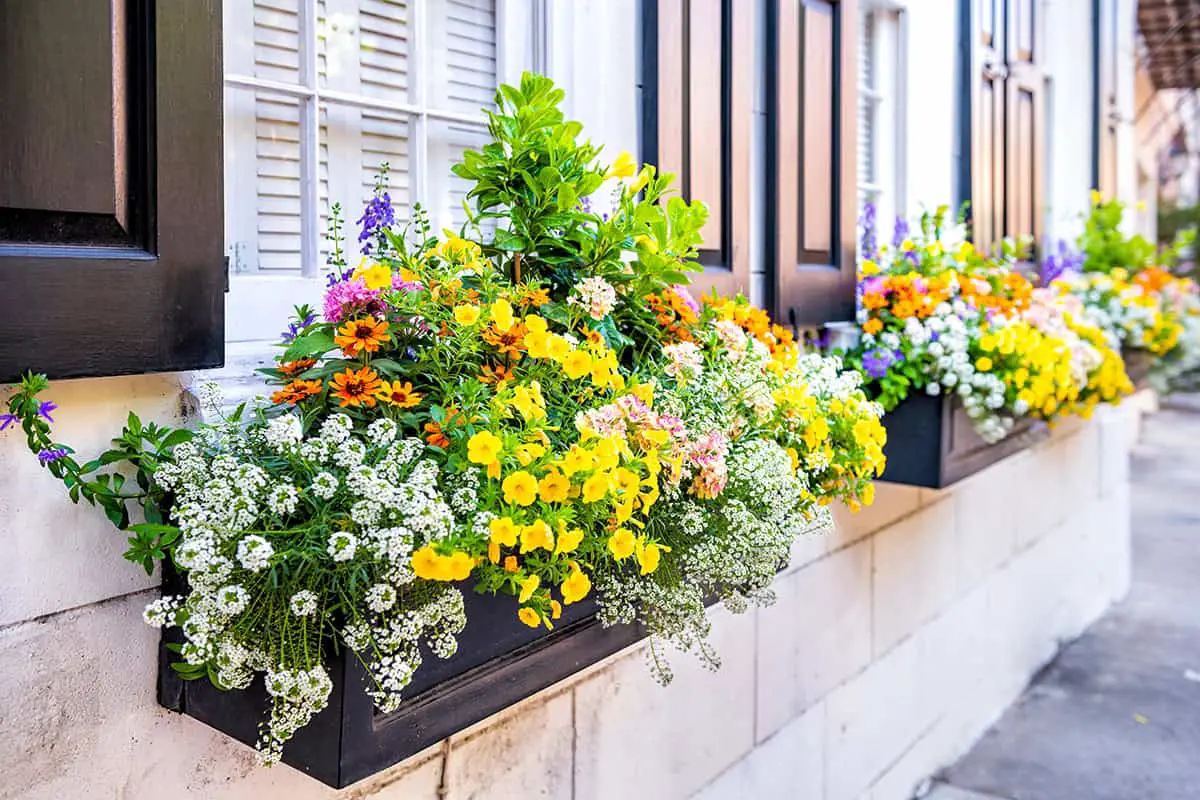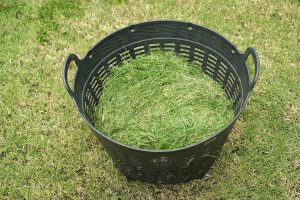A bright, colorful window box can transform the look of your home, adding charm and curb appeal. Whether you’re a seasoned gardener or just starting out, choosing the right flowers for your window boxes can make a big difference. By the end of this post, you’ll know exactly which flowers will thrive in your window boxes, ensuring a stunning display all season long.
Table of Contents
Petunias
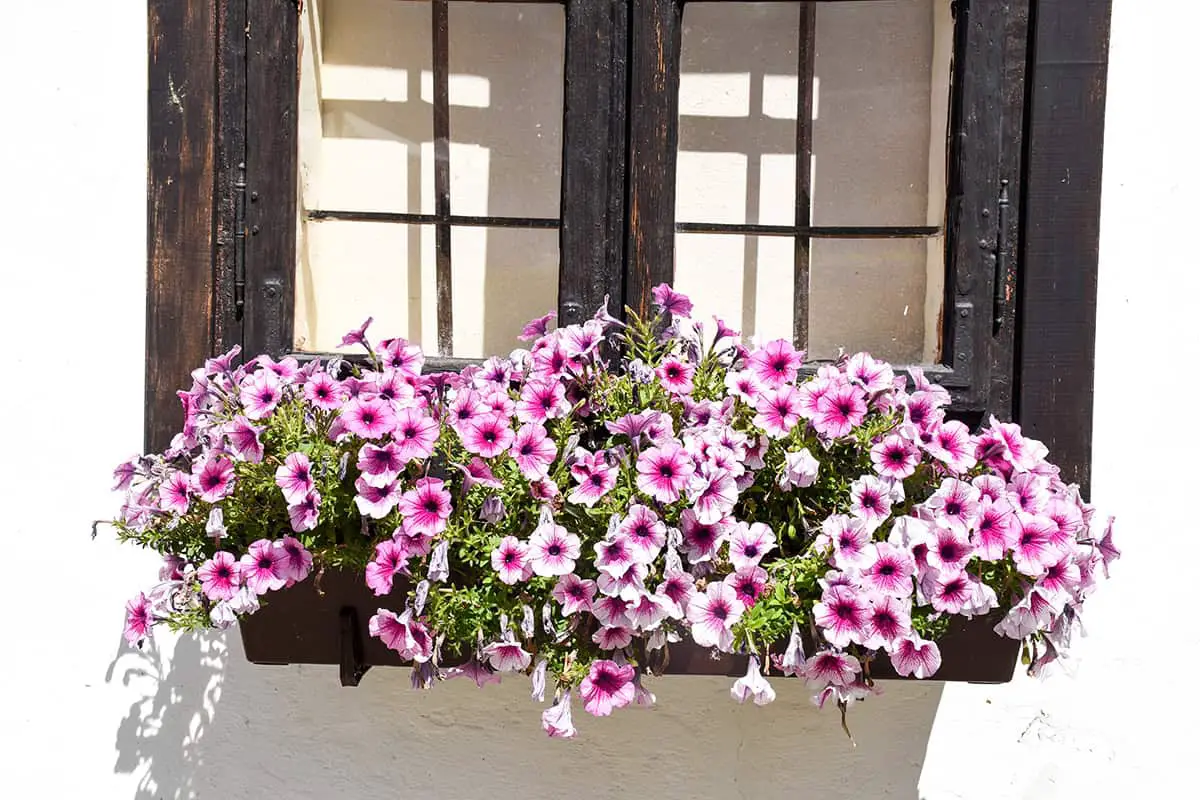
Petunias make a vibrant addition to your window boxes. These flowers bloom from spring until frost, offering long-lasting color. You’ll find petunias in a wide range of hues including pink, purple, red, white, and yellow. Their trumpet-shaped flowers attract hummingbirds and butterflies, adding more life to your window display.
Select petunias based on the size and style of your window boxes. Grandiflora petunias have large, showy flowers perfect for a bold look. They may be single or double, and some varieties cascade, which suits hanging arrangements. For smaller boxes, try milliflora petunias. They are compact and produce smaller flowers but in great abundance.
Care for petunias is straightforward. Ensure they get full sun to partial shade for best growth. They prefer well-drained soil, so avoid waterlogging. With regular deadheading, you’ll encourage more blooms. Petunias perform well whether they are in containers or as part of your flower bed arrangements.
Geraniums
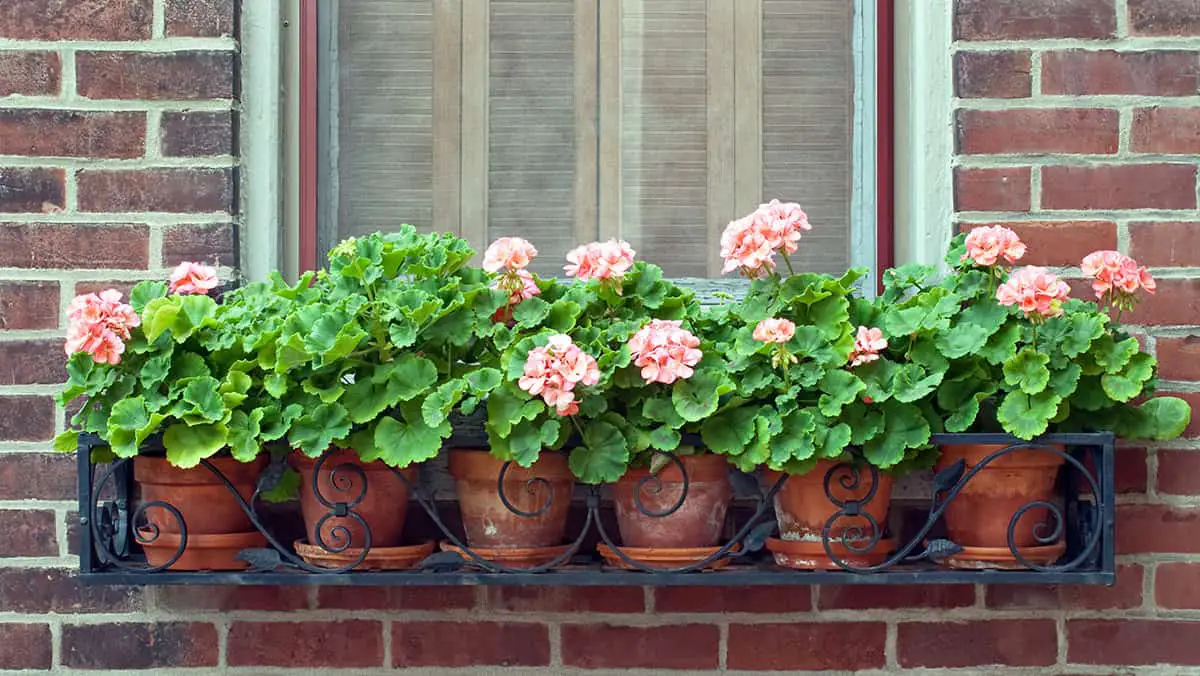
Geraniums enhance your window boxes with vibrant colors and a lush appearance. These plants thrive in sunny locations, making them perfect for window displays. You’ll find the care for geraniums straightforward, focusing on adequate sunlight and regular watering.
Select from a variety of geraniums to suit your style. The common garden geraniums, known scientifically as Pelargonium, come in hues of white, pink, and red. Their robust nature withstands fluctuating weather, ensuring a lively window box. For cascading greenery, consider ivy geraniums with their trailing growth habit.
Position your geraniums in well-draining soil and space them properly for ample airflow. This prevents disease and encourages healthy growth. They perform well with occasional fertilizer applications, especially during the growing season.
Begonias
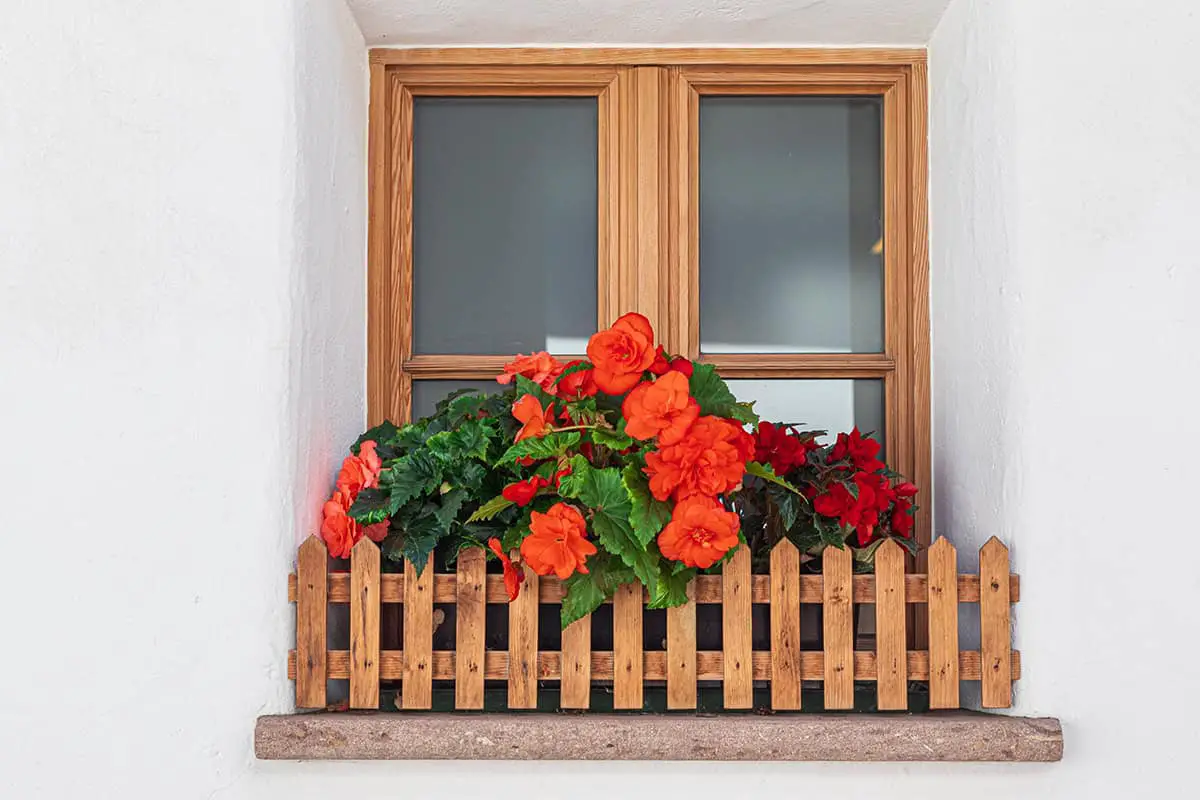
Begonias enhances your window boxes with their vibrant colors and varied forms. Tuberous begonias, ideal for partially shaded areas, showcase single or double blossoms in hues of white, pink, and red.
For continuous blooms, consider wax begonias. They’re notable for their resilience against deer and rabbits. They work well in containers and can flower throughout the summer.
If you prefer smaller leaves and a robust growth habit, Semperflorens begonias are suitable. Their flowers come in white, pink, or red. These begonias fit well in any home landscape.
Upright and mounding begonias fit beautifully in garden beds while trailing varieties are perfect for hanging baskets. They prefer shade over direct sun.
Lastly, wax begonias prove to be excellent for bedding and containers. You can keep them outdoors in the summer and bring them in during winter. They are favorable in patio containers, along walkways, or in shady woodland edges.
Impatiens
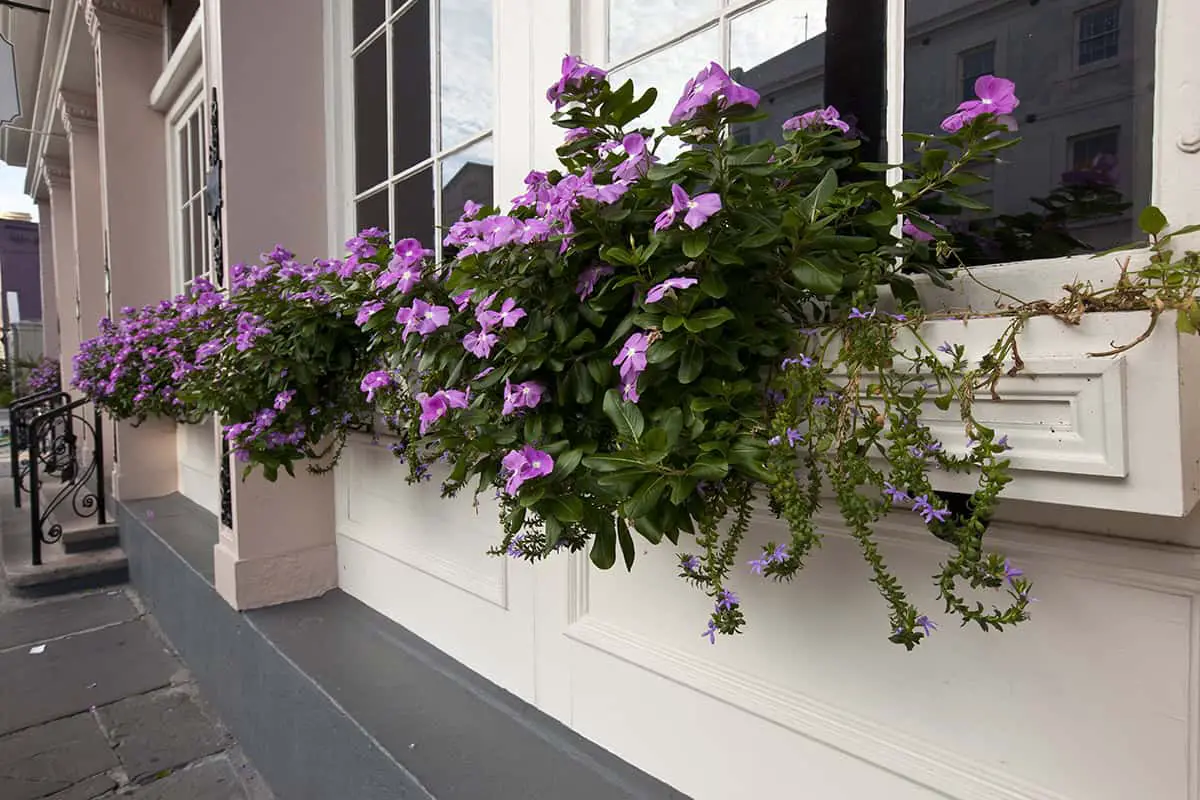
Impatiens brighten your window boxes with their vibrant blossoms. These flowers thrive in shady spots where other plants might struggle. You’ll find impatiens in a range of colors, fitting any design scheme.
You’ll value impatiens for their low maintenance and fast growth. They prefer rich, well-draining soil to flourish. Ensure you keep the soil consistently moist but not saturated.
When planting impatiens, space them about 8 to 12 inches apart. This spacing allows for adequate air circulation. Proper spacing also supports full, bushy growth.
Enjoy impatiens’ beauty from spring until the first frost. Their continuous blooms provide a long season of color. Regular deadheading isn’t necessary, as they self-clean.
For optimal health, feed your impatiens with a balanced, water-soluble fertilizer. A bi-weekly feeding schedule can keep your plants vibrant. Avoid over-fertilizing, which can reduce flowering.
For varieties, select from single or double blooms, depending on your preference. Impatiens have glossy leaves that complement their flowers. Heights vary, but many grow between 12 to 18 inches tall.
Marigolds
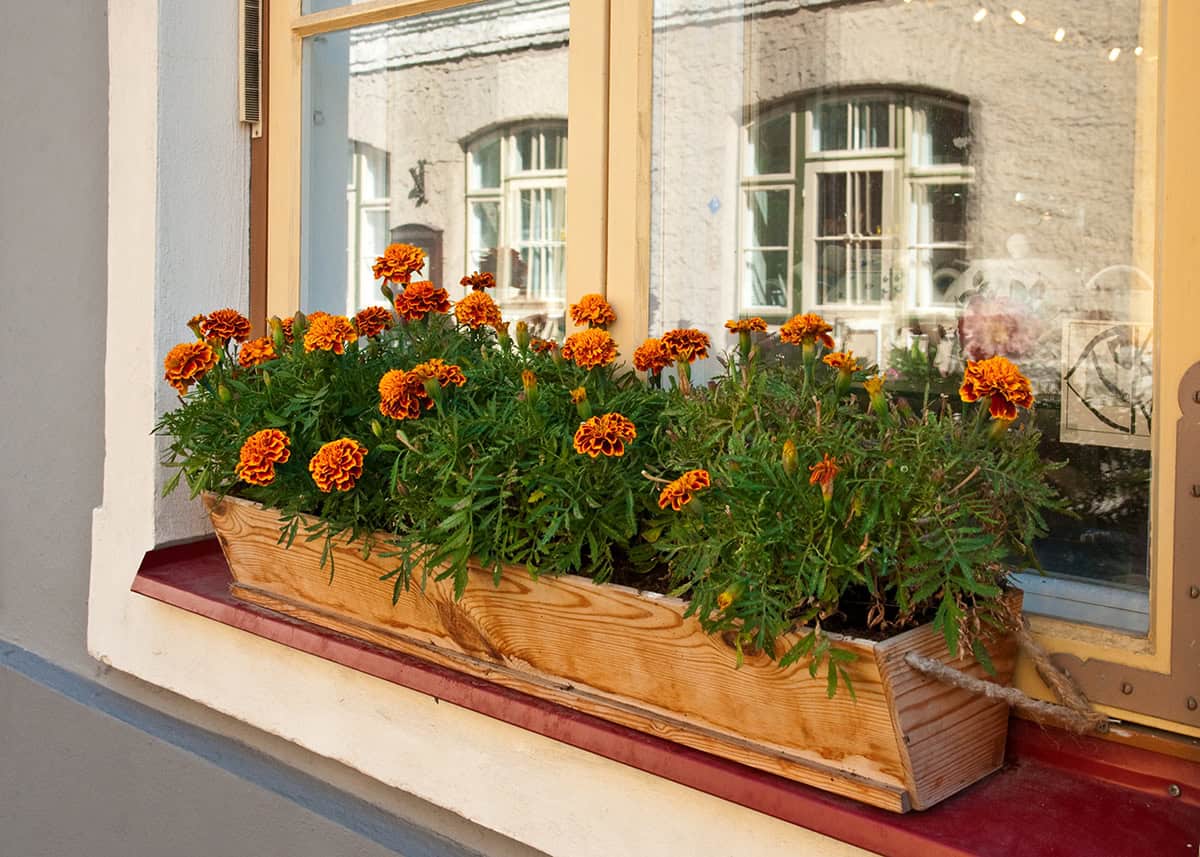
Marigolds brighten your window boxes with vibrant colors. These flowers come in shades of yellow and orange. You will find marigolds easy to grow and care for due to their hardy nature.
Marigolds vary in height. The smaller varieties, like signet marigolds, grow up to 6 inches tall. Larger African marigolds can reach heights of 3 to 4 feet. In window boxes, the compact types are more suitable and maintain a neat appearance.
These plants need full sunlight to flourish. They prefer well-draining soil and moderate water. Let the soil dry between watering to prevent root rot. You should place your window box where it gets at least 6 hours of direct sunlight daily.
Some marigold flowers are edible. Signet marigolds offer a spicy tarragon flavor suitable for culinary uses. Always ensure the flowers are pesticide-free before consuming.
These flowers not only add visual appeal, they exude a lemon scent. Marigolds can also help deter pests, making them a functional choice for your window garden.
Pansies
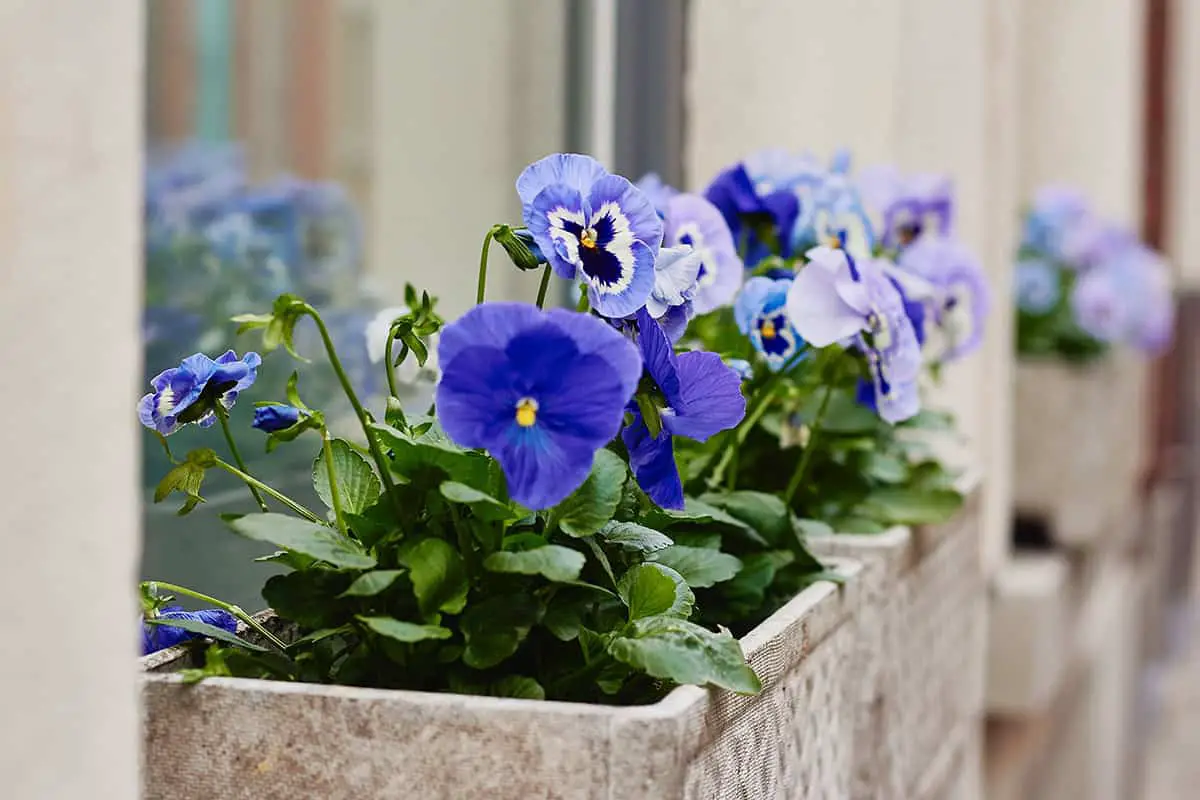
Pansies brighten your window boxes with a variety of colors. They thrive in cool temperatures, making them ideal for spring and fall. Your window boxes will pop with their shades of red, purple, yellow, and more. Place pansies in an area where they can get sunlight to flourish.
These flowers prefer temperatures between 40° F at night and 60° F during the day. You will find them easy to care for. Ensure they have well-drained soil to avoid root rot.
Pansies often have a dark center called a “face.” This feature adds a unique charm to your display. These flowers are not only beautiful but also edible, adding flair to salads and desserts.
Verbena
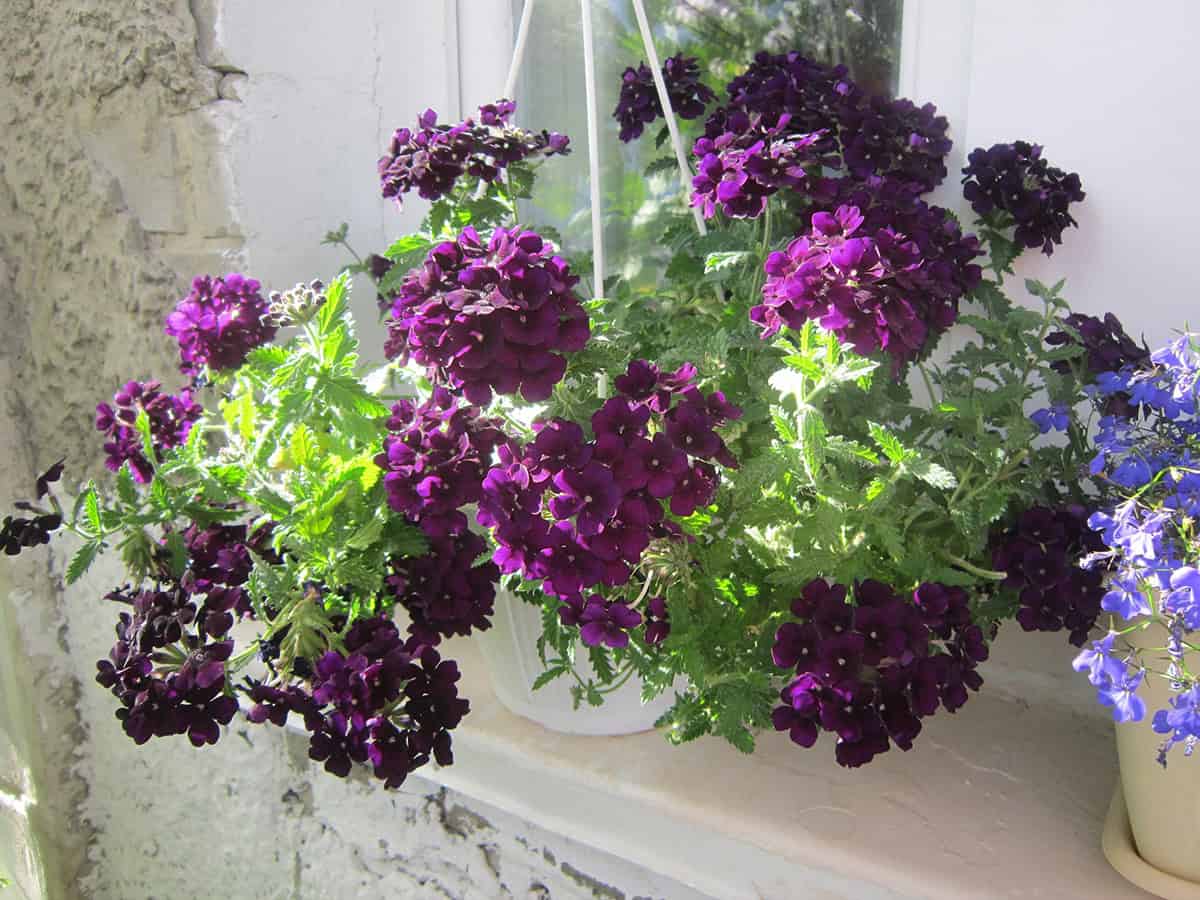
Verbena enhances your window boxes with vibrant colors. These hardy plants bring beauty to your home exterior through a rich palette. You enjoy blossoms of purple, pink, red, and blue. Verbena thrives under full sun, enriching your space with frequent blooms.
Maintenance is minimal for these flowers. They need regular watering to flourish. Yet, they show resilience against drought once established. Pruning mid-summer can keep them compact. For best flowering, ensure a sunny spot.
Fuchsias
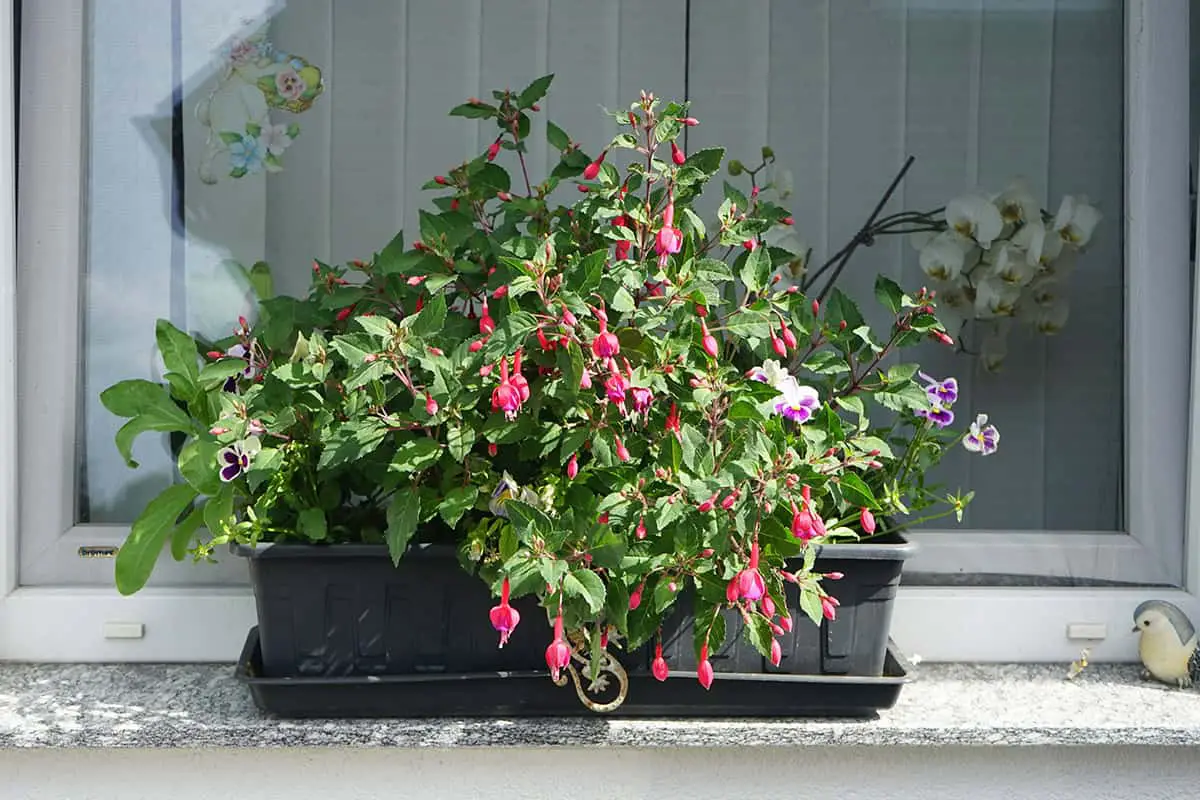
Fuchsias are ideal for your window boxes. These flowers display vibrant colors and graceful, drooping shapes. They thrive in cool and moist conditions, favoring partial to full shade. This makes them perfect for areas without intense sunlight.
Your window box can become a stunning display with fuchsia’s bell-shaped blooms. The plants often prosper in fertile, well-drained soil, and they enjoy soil rich in humus. Even if you have heavy clay soils, fuchsias can adapt. To ensure your plants flourish, provide them with the right soil conditions and avoid extreme heat.
For a successful display, consider the variety Fuchsia magellanica, also known as Hardy fuchsia. It is well-suited to hanging baskets and other container gardens, making it versatile for your window box needs.
Snapdragons
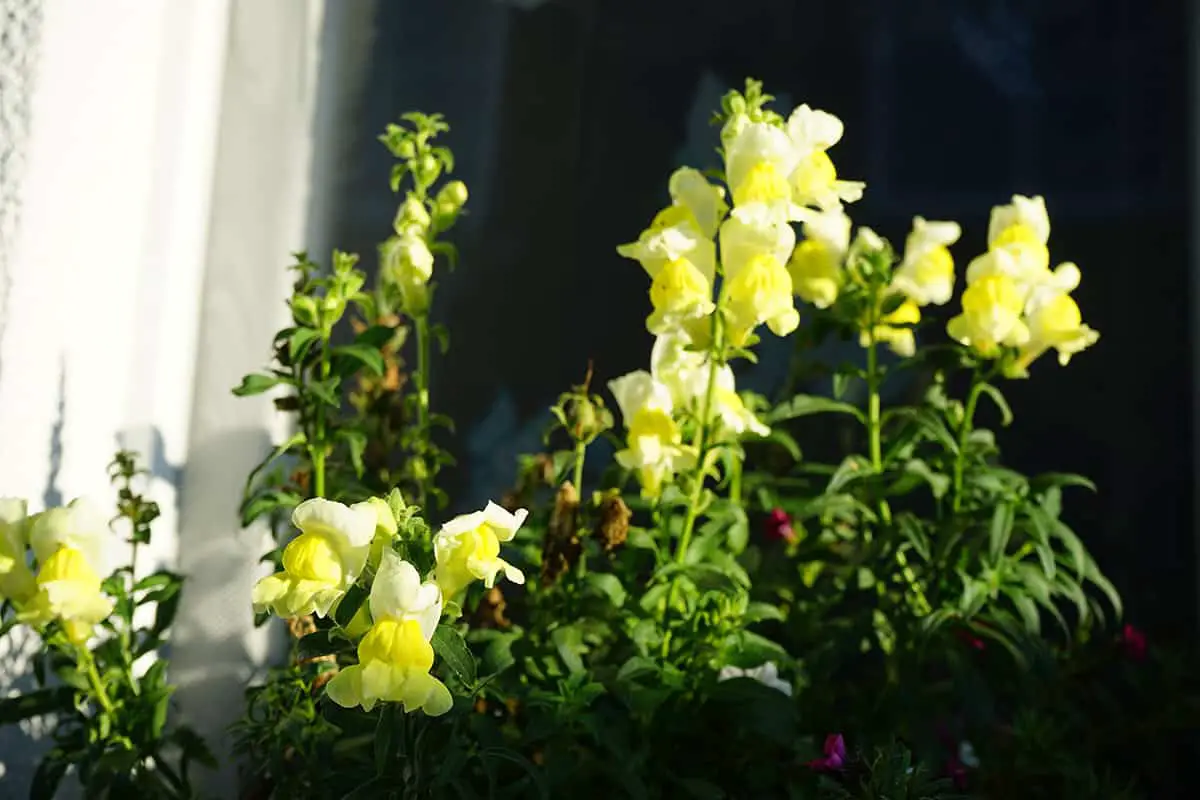
Snapdragons are a vibrant addition to your window boxes. Their tall flower spikes add height and structure. They bloom in several colors, complementing any design. Choose snapdragons for a touch of elegance by your windows.
These flowers attract pollinators. Your snapdragons will bring bees and butterflies to your urban garden. They’re not just beautiful; they support local ecosystems, too.
You can plant them in cool weather. Snapdragons prefer the milder temperatures of spring and fall. Their resilience makes them a smart choice for window boxes, thriving in these seasons with less care.
Remember, these plants need sunlight. Ensure your window boxes offer plenty of light for your snapdragons to flourish. Proper sun exposure leads to more vibrant blooms.
Lobelia

Lobelia plants grace your window boxes with a cascade of vibrant colors. They thrive with minimal fuss. You can choose from a variety of shades, such as purple, pink, white, and blue. Their delicate blossoms add a sophisticated touch to your outdoor décor.
These plants prefer cooler temperatures to flourish. Ensure that they are planted in well-drained soil. Regular watering helps lobelia to bloom profusely. However, take care not to overwater, as this could lead to root rot, which is detrimental to the plant’s health.
By midsummer, lobelia may begin to fade. You can revive them by cutting back the foliage. This will encourage a new growth spurt. As the days get cooler, expect your lobelia plants to rebound with fresh flowers.
Pair lobelia with other full sun or partial shade-loving plants in your window box. This creates a layered, visually rich display. Lobelia acts as a perfect filler with its compact mounding habit. They also drape gracefully over the edges of boxes, creating a stunning visual effect.
To prolong the flowering period and maintain vibrancy, feed your lobelia every few weeks with a water-soluble fertilizer. This helps fortify the plants throughout their growing season.
Sweet Alyssum
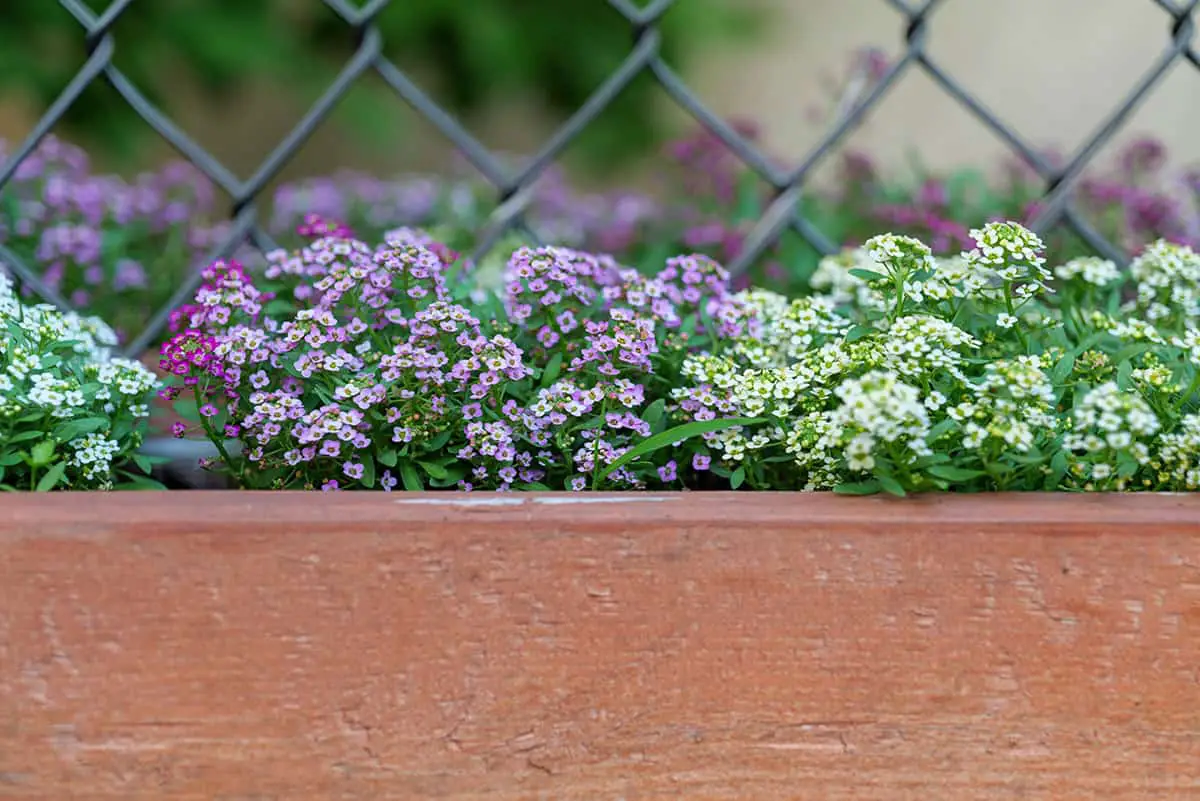
Sweet alyssum is a charming choice for your window boxes. This flowering plant offers cascades of tiny blooms. You can sow seeds directly into the box before the last spring frost. It’s also possible to start them indoors, about six weeks before outdoor planting.
These flowers need sunlight to germinate. When sowing, cover the seeds with just a thin layer of soil. Once planted, sweet alyssum blooms quickly, often in just over a month. It adds a honey scent and delicate texture to your array.
Sweet alyssum thrives in a variety of conditions. It can withstand some drought and heat. This resilience makes it ideal for busy or forgetful gardeners. You can choose from colors like white, pink, or purple, ensuring a match with your window box theme.
Properly caring for these plants is simple. They prefer sunny spots and tolerate different soil types. Regular watering and occasional trimming will keep them lush and blooming. Sweet alyssum can even attract pollinators, enhancing your window garden’s ecosystem.
Calibrachoa
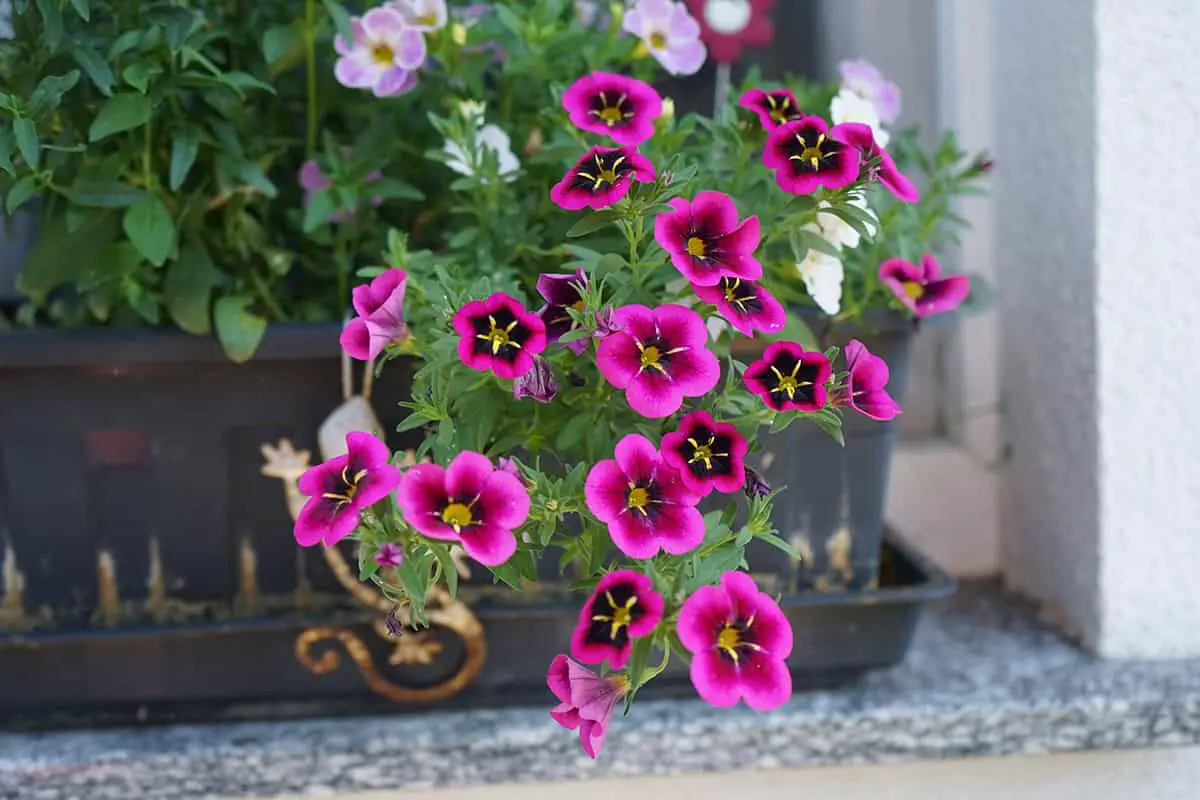
Calibrachoa resembles petunias with its prolific bell-shaped flowers. You can find them in a wide range of vibrant colors. Their compact growth makes them ideal for your window boxes.
These self-cleaning plants require relatively low maintenance. You won’t need to deadhead spent blooms. They thrive in full to partial sunlight and well-drained soil, simplifying your gardening tasks.
Native to South America, calibrachoa typically grows 6-12 inches tall. Its trailing habit fills your window boxes, creating a lush display of color. You should ensure regular watering for the best bloom density.
Recently, breeders have introduced calibrachoa varieties that can grow from seed. This gives you a broader choice of colors and forms. Remember to feed your calibrachoa every other week with a balanced fertilizer to support continuous blooming.
Dianthus
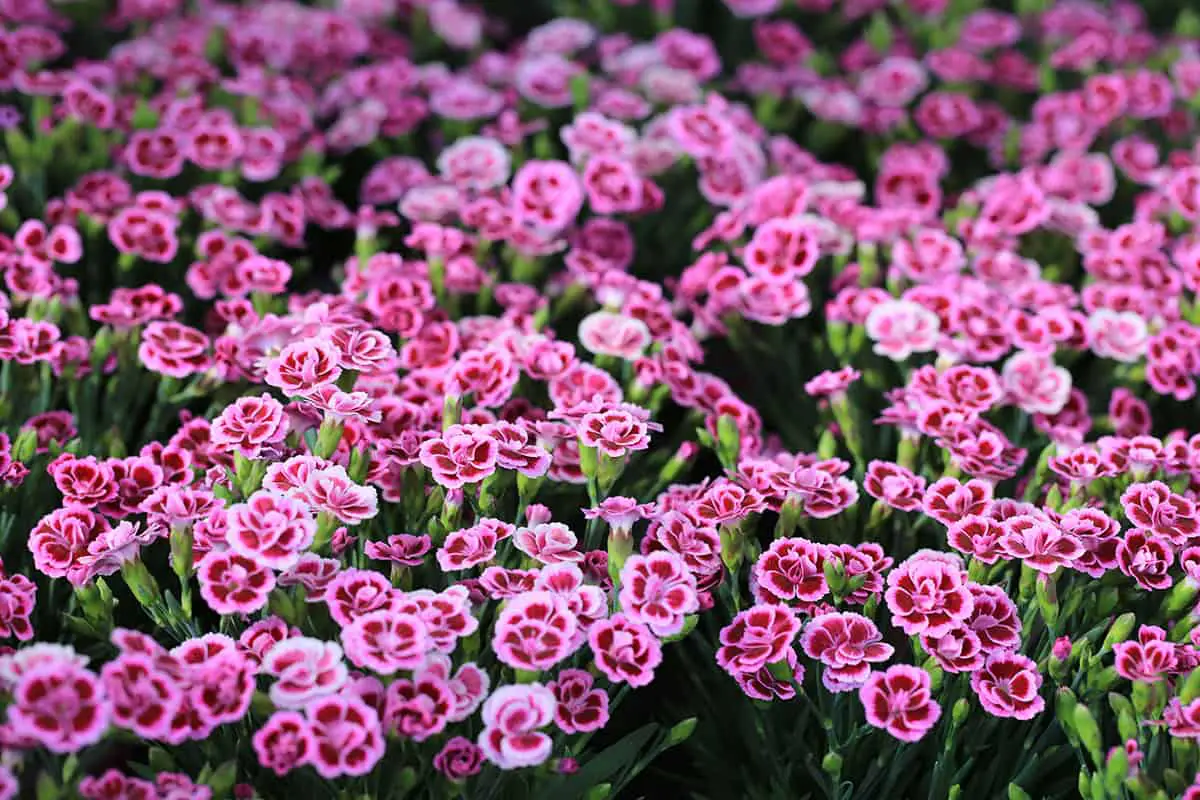
Dianthus plants are excellent for your window boxes. They offer striking colors and a spicy fragrance that will enhance any space. You get to enjoy a variety of pinks, reds, and whites that can brighten your view. These flowers thrive in cooler temperatures but need full to partial sun.
Your care routine for dianthus is straightforward. Ensure well-drained soil to prevent root rot. Regular deadheading encourages more blooms. Water them when the soil feels dry to maintain moisture.
In terms of design, dianthus mixes well with other plants. Their height, ranging from 6 to 18 inches, allows for a layered look. Pair them with trailing plants for a full, lush display.
Nasturtiums
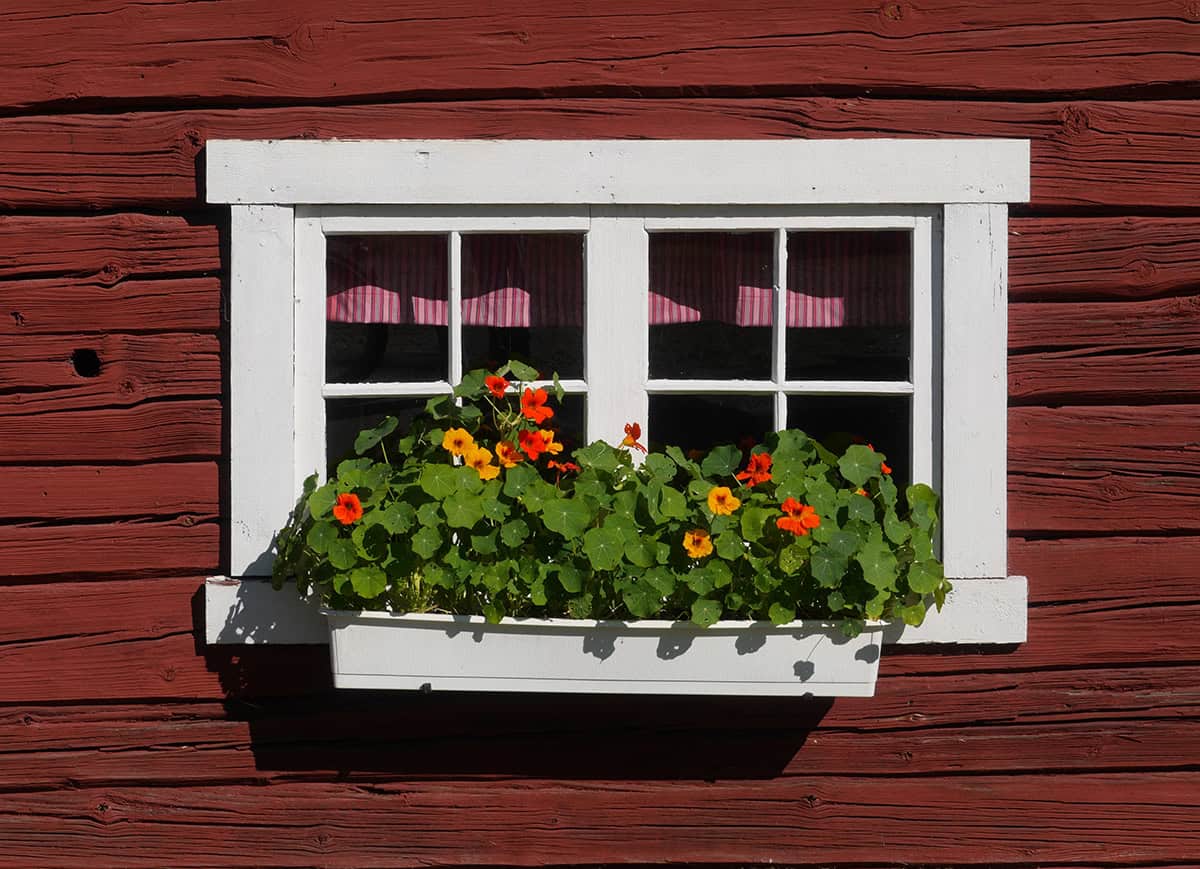
Nasturtiums add vibrant color to your window boxes. These easy-to-grow annuals bloom with bright flowers. You’ll enjoy their unique, rounded leaves and a variety of hues.
In full sun, nasturtiums thrive. Yet, they can tolerate light shade. The plants may become leggier with fewer flowers but still catch the eye. Choose a location with good light to encourage lush growth and plentiful blooms.
You will find nasturtiums to be versatile. They can drape beautifully over the edge of containers. This effect gives your window boxes a lush, overflowing look. The trailing varieties excel in creating this waterfall of color.
The edible qualities of nasturtiums might intrigue you. Their leaves, pods, and flowers add a spicy touch to salads. This feature makes them not only an aesthetic choice but also a practical one for your kitchen.
Dusty Miller
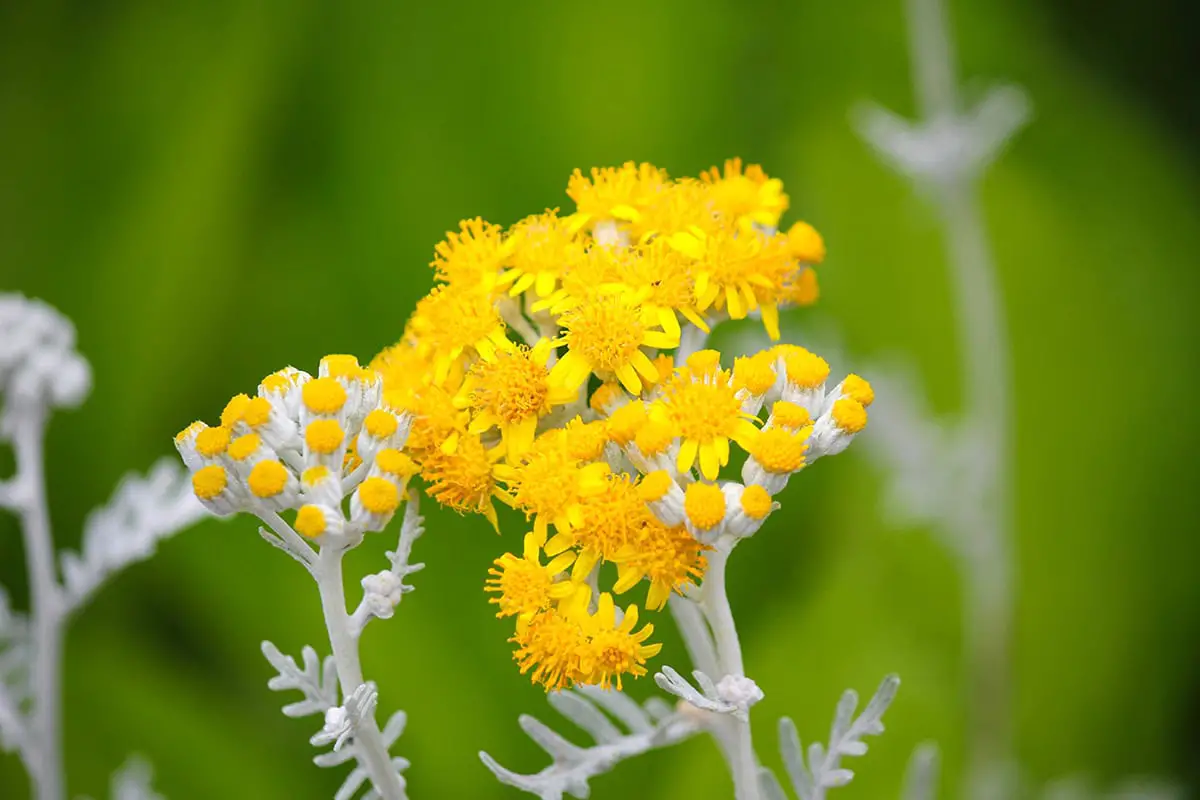
Dusty Miller adds elegance to your window boxes with its silvery foliage. Its scientific name is Senecio cineraria, and it heralds from the Mediterranean. This plant is a favorite due to its textured leaves and ability to complement flowering plants.
In your window box, Dusty Miller serves as a reliable backdrop for vibrant blooms. It thrives in full sun but can handle part shade. Ensure you provide well-draining soil to keep it healthy. The Silver Dust variety, with its finely cut leaves, is particularly suited for containers.
Pruning isn’t typically necessary, but you can trim the plant to maintain its shape. Dusty Miller’s yellow flowers are often removed to focus growth on the foliage. In colder climates, it’s grown as an annual despite being a perennial in zones 8 to 10.
To keep your Dusty Miller flourishing, water it when the top inch of soil feels dry. Overwatering can harm the plant, so let the soil dry out between waterings. Little feeding is required, but a light application of fertilizer in the spring can boost growth.
Portulaca
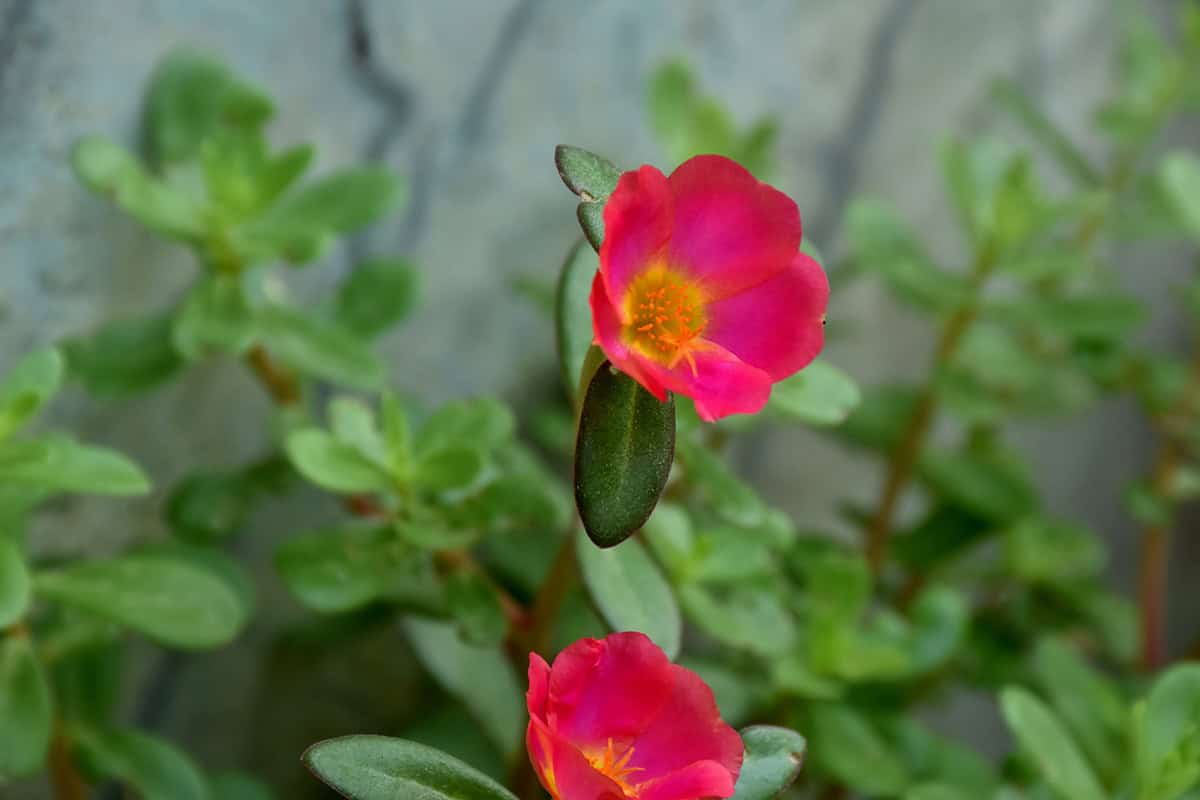
Portulaca, also known as Moss Rose, offers a striking addition to your window boxes. It is a heat-tolerant annual with a resilience that makes it ideal for sunny spots. As you consider plants for your space, know that Portulaca thrives with minimal care, creating a cascade of vibrant colors.
Portulaca flowers bloom from early summer until the first frost, presenting a mix of jewel tones that brighten any window box setup. The succulent leaves indicate its drought tolerance, meaning you can enjoy its beauty without constant watering. The plant grows well in well-drained soil and requires full sun exposure to flourish.
When you plant Portulaca, ensure it gets plenty of sunlight throughout the day. Select window boxes that offer enough depth for the roots to establish. Deadhead spent blooms to encourage further flowering. The joy of Portulaca is its ongoing bloom cycle, which provides a prolonged display of color.
Maintenance is minimal, allowing you to take pleasure in the decorative impact without extensive gardening knowledge. Attracting butterflies and hummingbirds, Portulaca transforms your window area into a lively hub of activity.
Salvia
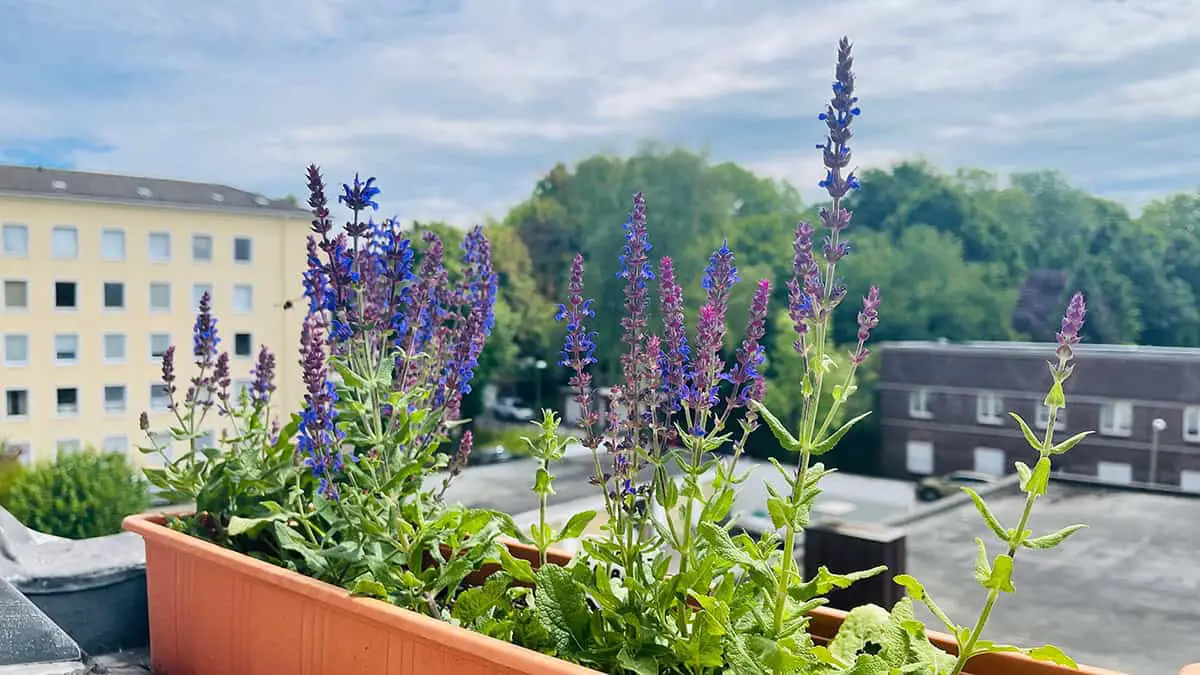
Salvias are an excellent choice for your window boxes. These plants provide vivid color and a pleasant scent. They quickly grow and adapt well to confined spaces like window boxes.
Their square stems and opposite leaves identify them easily. You will notice that flowers form a two-lobed corolla. They need well-drained soil and once established, they become relatively drought-tolerant.
To plant salvia, ensure you have a hole twice as wide as the pot. Space your plants 24-36 inches apart.
Coleus
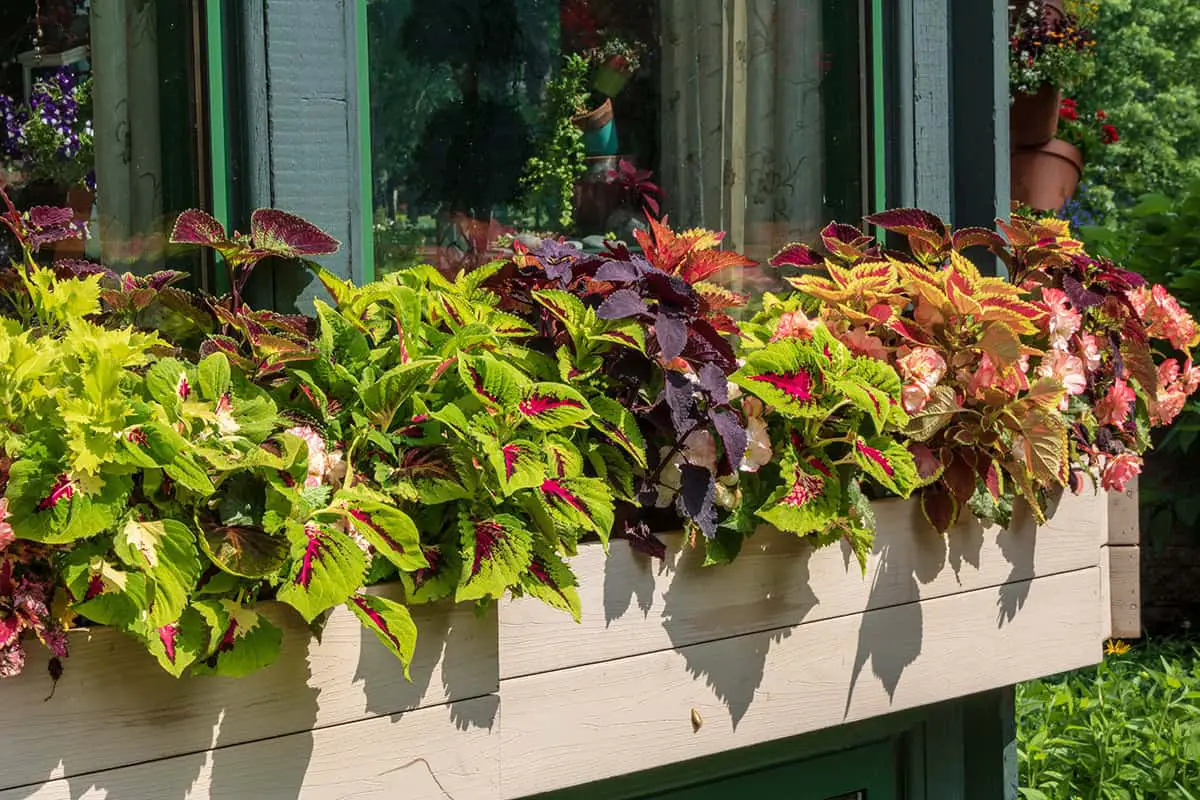
When selecting flowers for your window boxes, consider the vibrant coleus. Coleus plants catch the eye with colorful foliage in greens, yellows, pinks, reds, oranges, and maroons. They flourish in various environments, from shade to sun, adapting to different soil types. The coleus, with its diverse leaf patterns and hues, adds a tapestry of color to any setting.
You can grow coleus in your window boxes all year. If you do, take care to cut them back when they bloom. This ensures they stay lush and focus energy on their leaves, not flowers. Coleus is heat-tolerant and generally resilient against diseases and pests, making it an easy-care choice for gardeners at any experience level.
With proper care, coleus can stay vivacious throughout the seasons. Ensure your plants receive adequate water without becoming waterlogged. Fertilize them regularly to maintain healthy growth. If needed, pinch back the tips to encourage bushier foliage.
Ivy Geranium
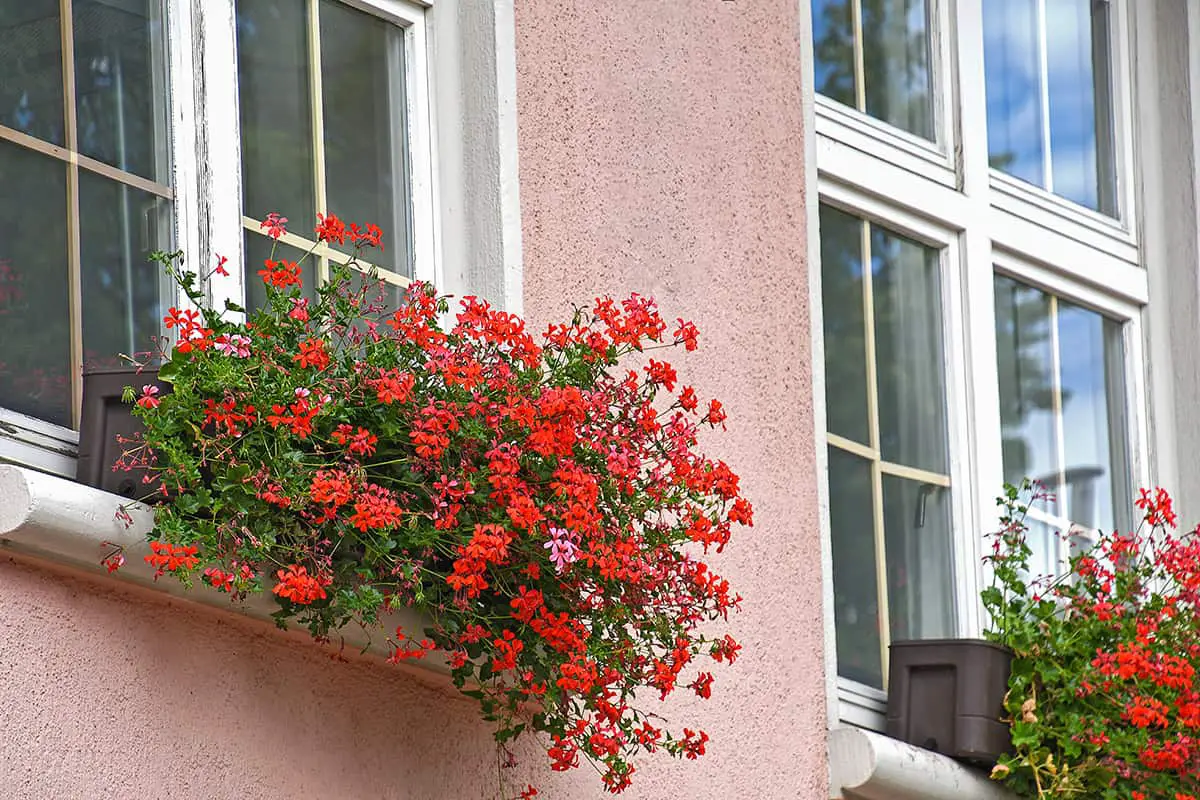
Ivy Geraniums are ideal for window boxes with their trailing growth and lush, ivy-shaped leaves. These plants adapt well to various light conditions, making them versatile for different orientations of your home. Ivy Geraniums offer blooms in white, pink, and red, which may be single or double, and are revered for their lengthy flowering period.
Your window box will benefit from the cascading nature of the Ivy Geranium, particularly the Balcon or mini-cascade types, noted for their floriferous disposition. As the blooms multiply, they create a vibrant display that can trail up to two feet. For optimal growth, ensure a well-draining soil mix and regular watering when the top inch feels dry.
In the right conditions, these geraniums will become a mass of color, even in less sunny spots. However, they require protection from the midday sun in hotter climates. To maintain a neat appearance and encourage more blooms, regularly deadhead spent flowers.
Vinca
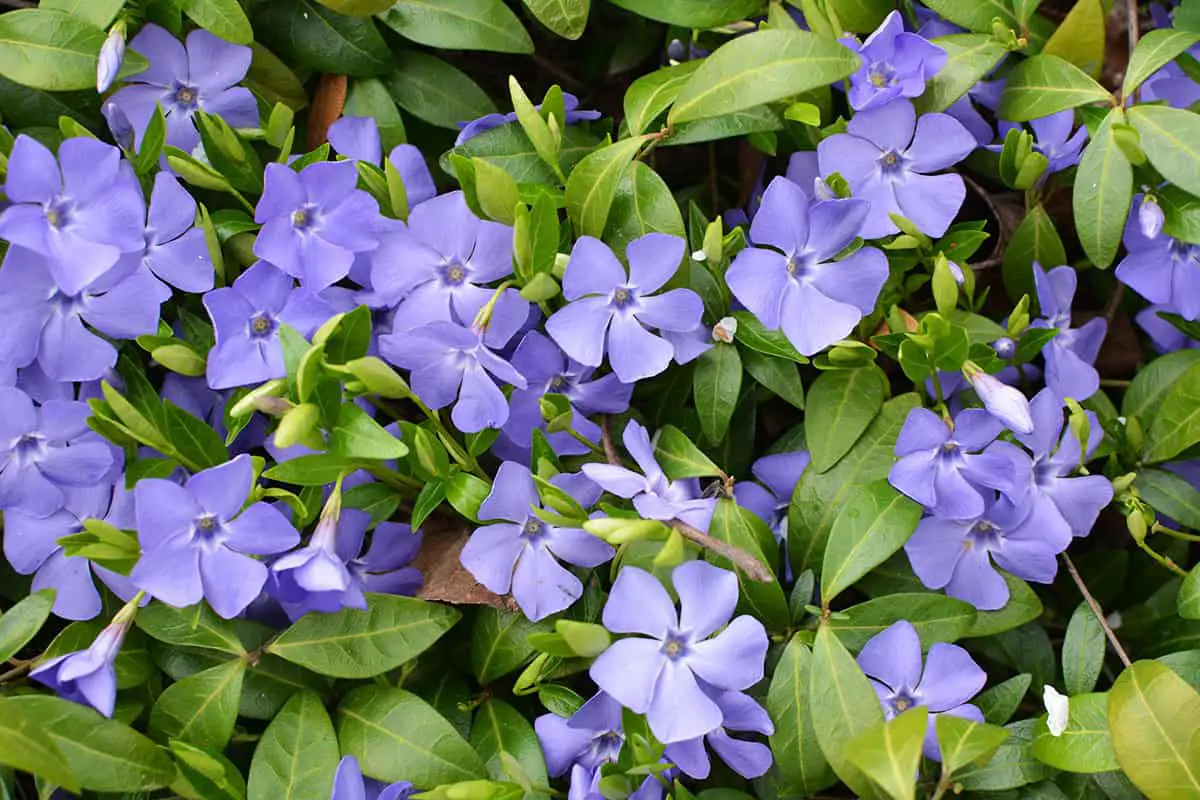
Vinca, also known as Madagascar periwinkle, is a resilient plant ideal for your window boxes. This summer annual thrives in full sun. It’s well-suited to handle heat and drought, making it an excellent choice for sunny spots. Vinca displays a lush growth with glossy, dark green leaves, which create a vivid backdrop for its flowers.
The flowers of vinca can elevate the appeal of your window boxes with their variety of colors. Expect blooms in shades of purple, red, pink, and white. This plant not only adds a splash of color but also is low maintenance.
Vinca prefers well-draining soil and requires warm ground for planting. Make sure to plant your vincas in warm soil after the threat of frost has passed. Once established, they will continue flowering even in the hottest temperatures throughout summer.
Adding vincas can give you lasting beauty with minimal care. Their flowers stand out against the foliage for a striking display. Make sure to provide them with ample sunlight and avoid overwatering to enjoy their full potential.
